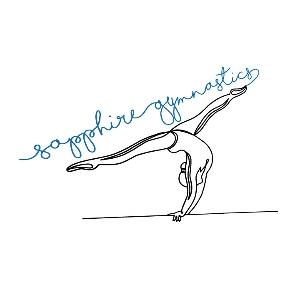Gymnastics Terminology and Definitions
All-Around - the event in a competition that involves a gymnast competing on all four apparatus - vault, bars, beam & floor. Scores from each event are totaled together to create an all-around score.
Amplitude - performing each movement with the fullest range of extension of all parts of the body.
Aerial - a free flight skill performed from a one foot takeoff that rotates around the horizontal axis.
Balance - a marked upright or upside down body position.
Balk - after the superior judge's signal, an incomplete attempt with failure to contact the apparatus on a mount or vault.
Bonus - the scoring section that rewards a routine which contains more than the minimum requirements.
Combinations - the use of a variety of connected difficulties (skills) placed throughout the routine.
Composition - the structure of the routine.
Connections - the use of skills to facilitate the flow of a routine.
Dance elements - skills of difficulty that include jumps, leaps and turns.
Deduction - points taken away from the score for various faults and/or incomplete skills.
Delay of Meet - when a gymnast does not begin her routine within 30 seconds of the judge's signal or a team is not prepared to begin competition on time. Points may be deducted.
Difficulty - skills which have been assigned a value of medium, superior, high superior or bonus high superior. Gymnasts are required to have 4 mediums, 3 superiors and 1 high superior in order to get full difficulty credit Bonus high superiors are like extra credit.
Directly Connected - two or more skills performed without a pause or step between skills. Gymnast may not shift feet or have an extra arm swing or be unbalanced.
Dismount - the skill performed to complete an exercise.
Dynamics - energy expressed within a routine.
Event Requirements - the skills/series required on each event.
Execution - performing a routine with confidence and perfection in form and technique.
Extra Swing- occurs when a gymnast swings forward or backward on the bars when the swing is not required to complete the next skills. All bars skills should be directly connected. Deductions are taken for extra swings.
Facilitates - when a spotter assists a gymnast with a skill and she could not have completed it independently.
Flight - momentary suspension in the air during a skill. A point during a skill when nothing touches the ground or apparatus.
High Superior - an advanced skill which receives 0.3 credit under difficulty. Gymnasts are required to have one high superior in a routine in order to receive full difficulty credit.
Layout - position in which the body is fully extended (in a straight line) during flight.
Medium - an intermediate skill which receives 0.3 credit under difficulty. Gymnasts are required to have four mediums in a routine in order to receive full difficulty credit.
Mount - the skill performed by the gymnast to begin a routine.
Pass - a minimum of three directly connected tumbling skills including at least one difficulty.
Pause/Stop - a break of 2 seconds or more during a routine.
Pike - a position in which the body is flexed or bent at least 90 degrees at the hips with the legs straight.
Projection - the outward display of personality expressed through pride in carriage and elegance in appearance.
Regrasp - a skill on bars consisting of a release of both hands, showing flight, then catch either bar.
Routine - the composition of an exercise. The combination of dance, skills and choreography put together.
Salto- a free flight skill performed from a two foot takeoff and rotating around the horizontal axis of the body to a one or two foot landing. An airborne skill without the use of the hands.
Series - two or more skills directly connected, performed without a pause or step between skills.
Skill - a difficulty or a connecting move which is not a difficulty.
Spot - a touch or support given to the gymnast while she is performing. Deductions are taken for a spot.
Superior - an advanced skill which receives 0.5 credit under difficulty. Gymnasts are required to have three superiors in a routine to receive full difficulty credit.
Tuck - position in which the knees are together and pulled up in front of the body toward the torso with the thighs at least horizontal.
Turn - a skill revolving around the vertical axis of the body while maintaining contact with the apparatus.
Twist - an airborne skill revolving around the vertical axis of the body.
Wolf - a position where the knees are together, one leg is bent and the other leg is extended straight with both thighs at least horizontal to the floor.



